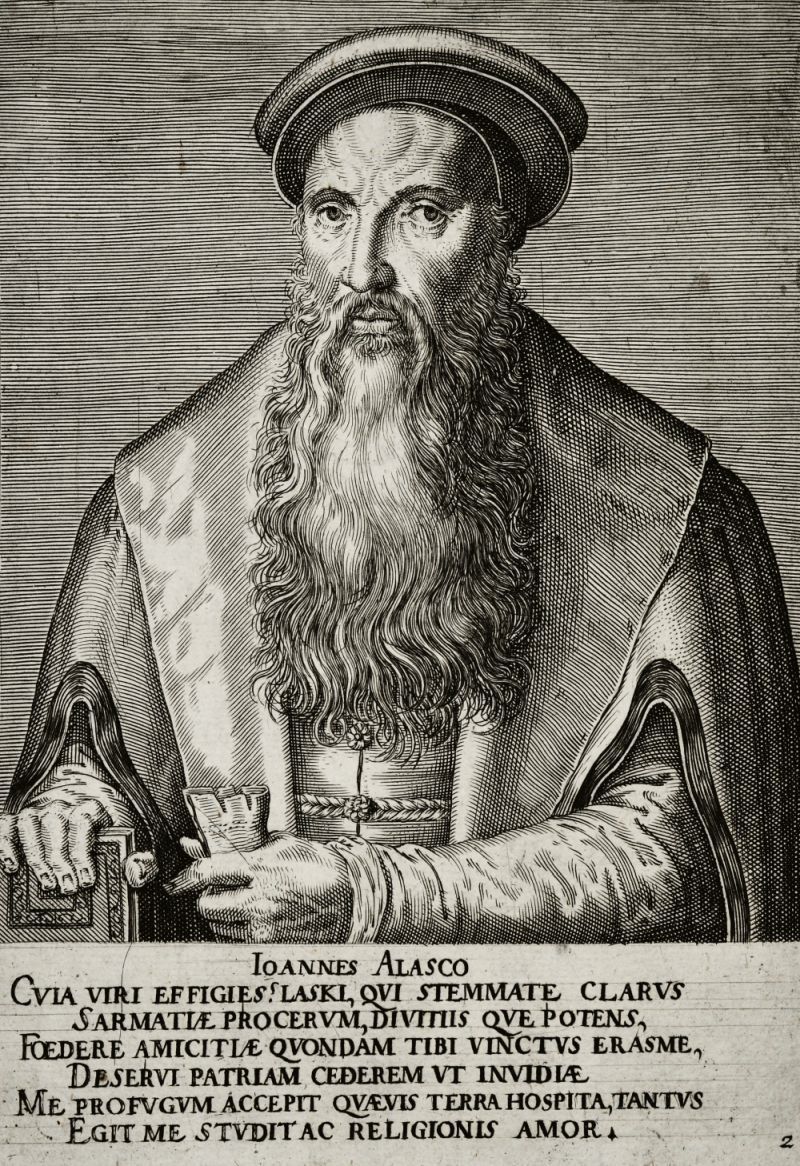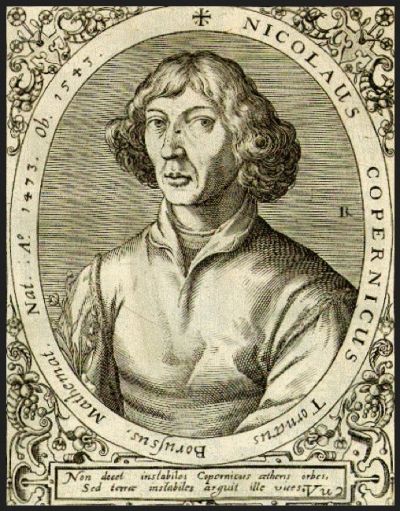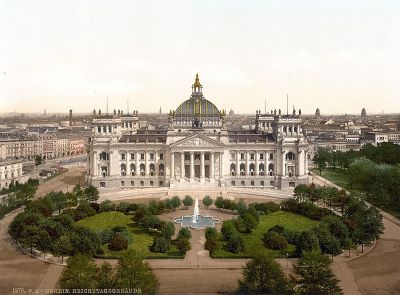Johannes a Lasco
Mediathek Sorted

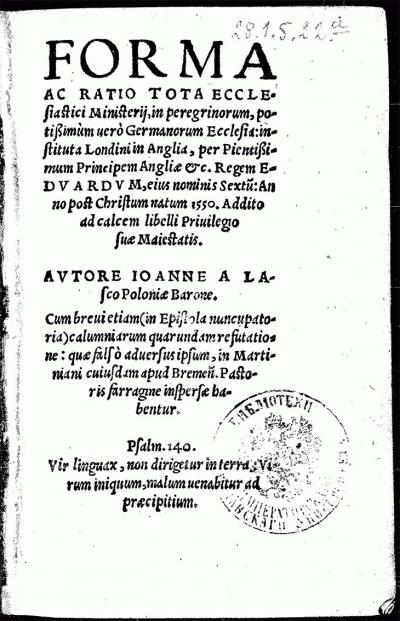
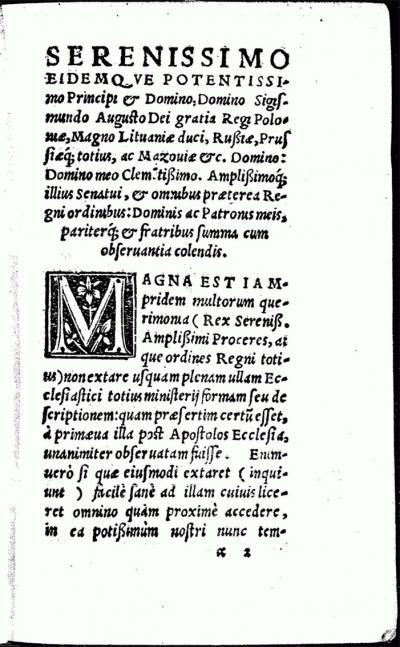
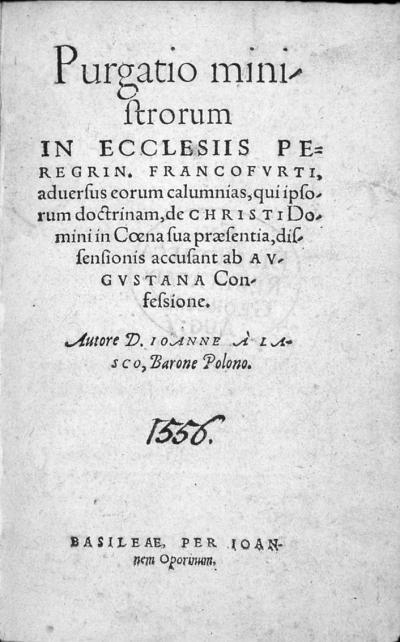
![Fig. 4: Response to Joachim Westphal Fig. 4: Response to Joachim Westphal - John à Lasco/Jan Łaski: Responsio ad uirule[n]tam, calumniisque Ac Mendaciis Consarcinatam hominis furiosi Ioachimi VVestphali Epistola[m] quandam, qua purgationem Ecclesiaru[m] Peregrinarum Francofor...](/sites/default/files/styles/width_100_tiles/public/assets/images/4_antwort_auf_joachim_westphal_1560.jpg?itok=Pd3diTmf)
![Fig. 5: Three letters Fig. 5: Three letters - John à Lasco/Jan Łaski: Epistolae tres lectu dignissimae, de recta et legitima ecclesiarum benè instituendarum ratione ac modo: ad Potentiss. Regem Poloniae, Senatum, reliquos[que] Ordines, Basel 1556](/sites/default/files/styles/width_100_tiles/public/assets/images/5_drei_briefe_1556.jpg?itok=hQ0svO_N)



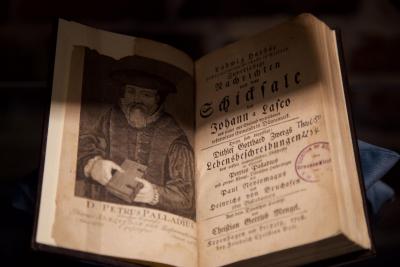

When à Lasco’s wife died of an infection, he married a Ms Katharina from the London congregation. But he did not stay there very long either. In summer 1553, Edward VI died at the age of sixteen. His successor to the throne, Mary I (1516-1558) was a Catholic who repealed the religious laws passed under Edward, reinstated the rite and teaching of the Catholic church and, from 1555, had Protestants, including priests and bishops, and Archbishop Cranmer in the following year, burnt at the stake as heretics. In September of the same year, à Lasco fled with 170 members of the congregation on two freighters to Denmark. However, the Lutheran King Christian III (1503-1559) turned the refugees away because he was unable to reach an agreement with the Reformers in the dispute over the Eucharist and they did not want to submit to the Danish church order. So à Lasco travelled to Emden where he managed to persuade Countess Anna to accept the London refugees, who arrived in East Frisia in spring 1554 after months of wandering aimlessly from Copenhagen via Lutheran towns on the German Baltic coast which did not want to accept them either.
A Lascos influence dwindled soon after the arrival of the London group of refugees. Countess Anna had now assumed a mediatory role between the various theologian positions, whilst à Lasco had become uncompromising as a result of his experiences in London and Denmark. When the Emden Catechism, which was the handbook for the teaching of fundamental questions of faith, was published in 1554, a hard fought compromise was reached between à Lasco and the Emden preachers. However, when the Spanish-Dutch court in Brussels repeatedly protested against à Lasco’s presence in Emden, Countess Anna decided to expel him. As a result, he left for Frankfurt am Main.
In Frankfurt as well, the dispute about the Eucharist erupted between the local Lutheran preachers and the reformed Dutch, Walloon and English religious refugees. A Lasco joined the Dutch congregation and acted as its spokesperson in the face of the Frankfurt Council. During this time, the Lutheran pastor from Hamburg Joachim Westphal (1510-1574), who had already attacked à Lasco during his stay in Denmark and had expelled the transient group of London refugees from Hamburg, published a writing against à Lasco, “Defensio adversus insignia mendacia Joannis à Lasco” (Defence against the outrageous lies of John à Lasco), in which he accused his congregations of breaching the imperial and religious peace concluded in Augsburg in 1555 between Emperor Charles V and the Lutheran imperial estates. In a “purgatory writing of the preachers of the refugee congregations”“[24] (Fig. 3) à Lasco rejected this accusation and would later react one last time, when in Poland again and at the end of his life, with a “response to the poisonous epistle patched together from hypocrisy and lies from the wild people of Westphalia with which he intends to slam the Purgatio of the Frankfurt refugee congregations”[25] (Fig. 4).
[24] Purgatio ministrorum in ecclesiis peregrinorum Francofurti … Autore D. Ioanne à Lasco, Barone Polono, Basel 1556, Göttingen State and University Library; Jürgens 1999 (see Bibliography 2.), p. 80, 82f.
[25] Joannes à Lasco: Responsio ad virulentam calumniisque ac mendaciis consarcinatam hominis furiosi Joach. Westphali epistolam …, Ursel 1557, Herzog August Library, Wolfenbüttel; Jürgens 1999 (see Bibliography 2.), p. 88 f.





















































































